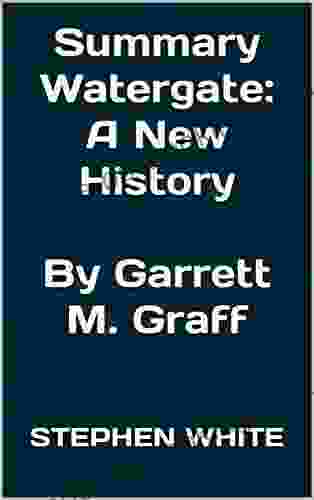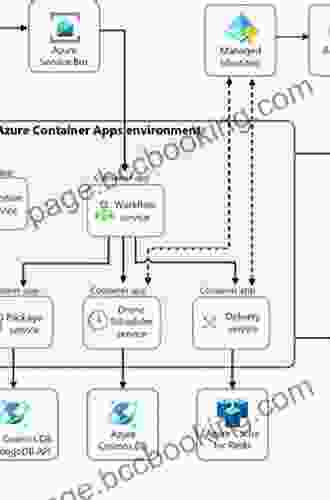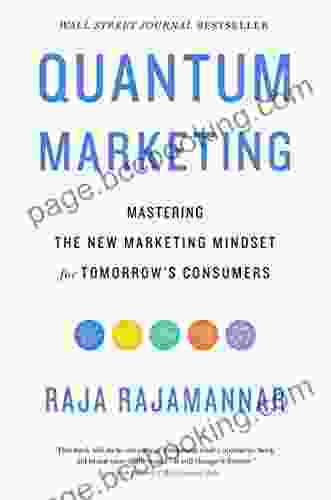Orchestration and Integration in Microservices and Cloud Native Architectures: A Comprehensive Guide

The rise of microservices and cloud native architectures has brought about a new set of challenges for developers and architects. These challenges include how to orchestrate and integrate these loosely coupled components in a way that is efficient, scalable, and reliable.
This guide will provide you with a comprehensive overview of the key concepts, technologies, and best practices for orchestrating and integrating microservices and cloud native architectures. We will cover topics such as:
4.8 out of 5
| Language | : | English |
| File size | : | 28296 KB |
| Text-to-Speech | : | Enabled |
| Screen Reader | : | Supported |
| Enhanced typesetting | : | Enabled |
| Print length | : | 430 pages |
- The different types of microservices architectures
- The challenges of orchestrating and integrating microservices
- The key technologies for orchestrating and integrating microservices
- Best practices for orchestrating and integrating microservices
Microservices Architectures
Microservices architectures are a type of software architecture that decomposes a complex application into a set of smaller, independent services. These services are typically deployed in containers and can be scaled independently of each other.
There are many different types of microservices architectures, but the most common include:
- Monolithic architecture: A monolithic architecture is a traditional software architecture in which all of the application's components are bundled together into a single deployment unit.
- SOA (Service-Oriented Architecture): A SOA is a software architecture in which the application's components are exposed as services that can be accessed by other applications.
- Microservices architecture: A microservices architecture is a software architecture in which the application's components are decomposed into a set of smaller, independent services.
Microservices architectures offer a number of advantages over monolithic architectures, including:
- Increased scalability: Microservices can be scaled independently of each other, which makes it easy to scale the application as needed.
- Increased flexibility: Microservices can be developed and deployed independently of each other, which makes it easy to add new features or update existing features.
- Increased fault tolerance: If one microservice fails, the other microservices will continue to function, which makes the application more fault tolerant.
The Challenges of Orchestrating and Integrating Microservices
While microservices architectures offer a number of advantages, they also present a number of challenges for developers and architects. These challenges include:
- Service discovery: Microservices are often deployed in a distributed environment, which makes it difficult to discover and connect to them.
- Load balancing: Microservices can experience varying levels of load, which makes it important to load balance the traffic between them.
- Fault tolerance: Microservices can fail for a variety of reasons, which makes it important to implement fault tolerance mechanisms.
- Security: Microservices can be exposed to a variety of security threats, which makes it important to implement security measures.
The Key Technologies for Orchestrating and Integrating Microservices
There are a number of technologies that can be used to orchestrate and integrate microservices. These technologies include:
- Kubernetes: Kubernetes is an open-source container orchestration system that can be used to manage and deploy microservices.
- Docker: Docker is an open-source container platform that can be used to package and distribute microservices.
- Service mesh: A service mesh is a network of microservices that provides a variety of services, such as service discovery, load balancing, and fault tolerance.
- API gateway: An API gateway is a single point of entry for all traffic to a microservices-based application.
- Event-driven architecture: An event-driven architecture is a software architecture in which the application's components communicate with each other through events.
Best Practices for Orchestrating and Integrating Microservices
When orchestrating and integrating microservices, it is important to follow a number of best practices. These best practices include:
- Use a service mesh: A service mesh can provide a number of benefits, such as service discovery, load balancing, and fault tolerance.
- Use an API gateway: An API gateway can provide a single point of entry for all traffic to a microservices-based application.
- Use an event-driven architecture: An event-driven architecture can make the application more scalable and resilient.
- Monitor the application: It is important to monitor the application to ensure that it is running smoothly and that there are no performance issues.
- Secure the application: It is important to secure the application to protect it from a variety of security threats.
Microservices architectures offer a number of advantages over monolithic architectures, but they also present a number of challenges for developers and architects. By following the best practices outlined in this guide, you can successfully orchestrate and integrate microservices and cloud native architectures.
4.8 out of 5
| Language | : | English |
| File size | : | 28296 KB |
| Text-to-Speech | : | Enabled |
| Screen Reader | : | Supported |
| Enhanced typesetting | : | Enabled |
| Print length | : | 430 pages |
Do you want to contribute by writing guest posts on this blog?
Please contact us and send us a resume of previous articles that you have written.
 Book
Book Novel
Novel Page
Page Chapter
Chapter Text
Text Story
Story Genre
Genre Reader
Reader Library
Library Paperback
Paperback E-book
E-book Magazine
Magazine Newspaper
Newspaper Paragraph
Paragraph Sentence
Sentence Bookmark
Bookmark Shelf
Shelf Glossary
Glossary Bibliography
Bibliography Foreword
Foreword Preface
Preface Synopsis
Synopsis Annotation
Annotation Footnote
Footnote Manuscript
Manuscript Scroll
Scroll Codex
Codex Tome
Tome Bestseller
Bestseller Classics
Classics Library card
Library card Narrative
Narrative Biography
Biography Autobiography
Autobiography Memoir
Memoir Reference
Reference Encyclopedia
Encyclopedia Pamela Duncan Edwards
Pamela Duncan Edwards Peter D Rogers
Peter D Rogers Scott Bukatman
Scott Bukatman Virginia Hein
Virginia Hein Penelope Pierce
Penelope Pierce Yahiya Emerick
Yahiya Emerick Rachel Eskandari
Rachel Eskandari Sam Leith
Sam Leith The Secret Midwife
The Secret Midwife Stephen Coonts
Stephen Coonts Peter Woit
Peter Woit Steve Pemberton
Steve Pemberton Ryan Johnston
Ryan Johnston Ralph Waldo Emerson
Ralph Waldo Emerson Tillie Walden
Tillie Walden Nurit Karlin
Nurit Karlin Sutanya Dacres
Sutanya Dacres Nightingale Conant
Nightingale Conant Oliver Clarke
Oliver Clarke Pamela Tomlin
Pamela Tomlin
Light bulbAdvertise smarter! Our strategic ad space ensures maximum exposure. Reserve your spot today!

 Calvin FisherUnveiling the Extraordinary Journey of Abba Eban: A Statesman, Diplomat, and...
Calvin FisherUnveiling the Extraordinary Journey of Abba Eban: A Statesman, Diplomat, and...
 Chase MorrisRewriting History: Explore the Past, Present, and Future with Garrett Graff's...
Chase MorrisRewriting History: Explore the Past, Present, and Future with Garrett Graff's... William ShakespeareFollow ·4.3k
William ShakespeareFollow ·4.3k Jesus MitchellFollow ·8.1k
Jesus MitchellFollow ·8.1k Roy BellFollow ·3.4k
Roy BellFollow ·3.4k Jack LondonFollow ·14k
Jack LondonFollow ·14k George BellFollow ·13.5k
George BellFollow ·13.5k Julian PowellFollow ·15.5k
Julian PowellFollow ·15.5k Rex HayesFollow ·6.7k
Rex HayesFollow ·6.7k Neil GaimanFollow ·3k
Neil GaimanFollow ·3k

 Marvin Hayes
Marvin HayesGoverning Law for Law School and Bar Exam Prep: Your...
Unlock the Secrets of...

 Sidney Cox
Sidney CoxUnveiling the Epic Tales of Whiskey, War, and Military...
In the tapestry of history,...

 Victor Turner
Victor TurnerGoverning Law for Law School and Bar Exam Prep: The...
What is Governing...

 Robert Browning
Robert BrowningSterling Test Prep MCAT General Chemistry Practice...
: Embark on Your MCAT General Chemistry...
4.8 out of 5
| Language | : | English |
| File size | : | 28296 KB |
| Text-to-Speech | : | Enabled |
| Screen Reader | : | Supported |
| Enhanced typesetting | : | Enabled |
| Print length | : | 430 pages |












